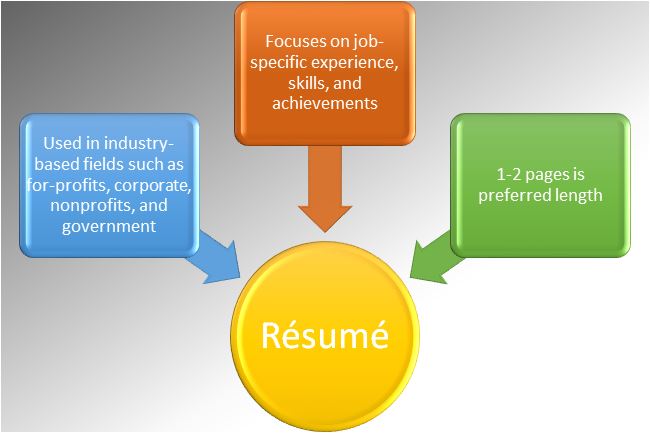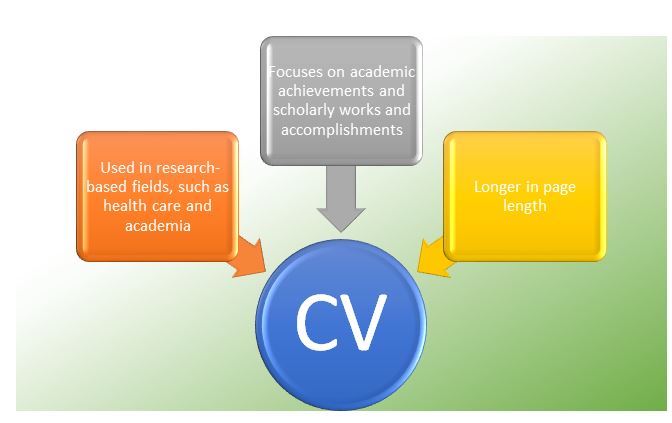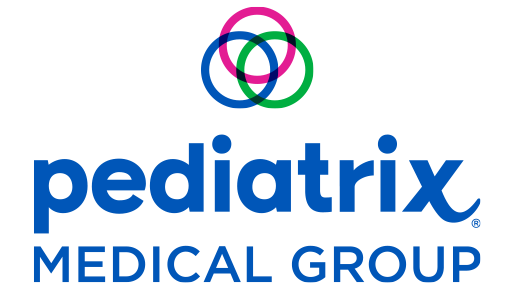Special Interest Group Update
In each issue, one of NANN's special interest groups shares information in their area of focus.
In the World of Résumés and CVs, Which Will You Choose?
Tosha Harris, DNP APRN NNP-BC, NANN E-News Editor
Great work, and congratulations! Completing your first podium or poster presentation is a significant accomplishment. It’s time to take the next important step—updating your curriculum vitae (CV). A well-crafted CV can be the key to unlocking new academic and professional growth opportunities. It highlights your accomplishments, skills, and experiences, giving potential employers or institutions a comprehensive overview of your qualifications and expertise. Creating a compelling CV sets you up for success and demonstrates your commitment to your career or academic pursuits.
You may ask, "What is a curriculum vitae? How is it different from a résumé, and why do I need one?"
Both a résumé and a curriculum vitae are marketing tools you create to showcase your qualifications and experience to potential employers. Though they both need to grab the reader’s attention quickly with impressive accolades and accomplishments, they are very different. According to Dr. Barbara Snapp (n.d.):
- A résumé in our specialty typically lists the most common activities of that particular neonatal professional in the NICU setting.
- A CV in our specialty would expound on activities performed in addition to everyday duties. “The expectation is that the person is already accomplished at their job description, so a listing of activities that are above and beyond basic work duties is added.”
Résumés and CVs are not interchangeable.
A résumé is a one- to two-page document that focuses on your work experience, skills, and achievements specific to the job you are applying for. A well-written résumé should highlight your most relevant work experience, skills, and accomplishments—and demonstrate how your qualifications make you the best candidate for the position.
Curriculum vitae is Latin for “course of life.” A CV is a comprehensive document that typically spans several pages and describes in detail all of your academic activities and accomplishments. It includes extensive information about academic experiences, such as degrees, teaching experience, research, awards/honors, professional associations/licenses, publications, presentations, and other achievements. Like the résumé, it should demonstrate your unique qualifications and experiences.
Research-based fields such as health care or academia often require CVs, whereas résumés are typically used to apply for industry roles outside academia, such as for-profit, corporate, nonprofits, or governmental jobs.


Note. Data adapted from Center for Career Development, Princeton University (n.d.).
Step-by-Step Guide to Writing a CV
The following list of elements that might be included in a CV was developed by viewing many CVs available from faculty and on the internet. Although a CV's parts can be adjusted based on experience, the core content covering professional and academic history remains relatively constant.
Begin by selecting the format that best suits your needs. The two most popular formats are chronological and functional CVs.
- A chronological CV presents your work and education history in reverse chronological order.
- A functional CV, also known as a skills-based CV, emphasizes your skills and qualifications rather than your work history. This format is handy if you have gaps in your employment history, are shifting careers, or possess diverse skills that may not be adequately highlighted in a chronological format.
Contact Information
Include the following in your CV:
- Full name
- Phone number
- Email Address
You may also choose to add your:
- LinkedIn profile
- Website
Professional Summary
Consider including a professional summary reviewing your key qualifications, experiences, and skills, particularly if you have several years of experience. This section is optional.
Education
List your degrees earned, including bachelor's, master's, and Ph D, in reverse chronological order. Include each institution's name and location and your graduation date.
Work Experience
For each job you’ve held, list the job title, company name, location, employment dates, and detailed descriptions of your responsibilities and achievements. Use action verbs to make your descriptions more impactful.
Achievements and Awards
Highlight awards, recognition, or notable achievements you’ve earned. If you use your CV to apply for a particular position, this recognition can help you stand out from other candidates, bolster your credibility, and showcase your dedication to your work.
Projects
If you have relevant personal or academic projects, consider including a section to describe them in detail, emphasizing your contributions and outcomes.
Research Experience
For research-focused positions, your research experience should effectively demonstrate your expertise and potential contributions. You should include the following:
- Research Projects: List and describe the specific research projects you worked on. Include the project title, a brief description, and the research objectives.
- Position Information: Start with the position you held, such as Research Assistant, Primary Investigator, or Co-Investigator.
- Research Institution or Lab: Name the research institution, laboratory, or department where you conducted your research and the location (city and state or country).
- Dates of Research: Specify the dates you conducted the research, including start and end dates.
- Research Focus or Area: Provide a clear and concise statement about the specific area or field of research you were involved in.
- Research Methodology: Explain the research methods and techniques you employed, highlighting any specialized equipment, software, or tools you used.
- Key Responsibilities: Describe your role and responsibilities within the research team; include the design of experiments, data collection and analysis, literature reviews, or any other tasks related to the research.
- Publications and Presentations: List any research papers, articles, conference presentations, posters, or other scholarly contributions related to your research. Include publication titles, publication venues, and publication dates.
- Research Funding: If you were involved in securing research funding or grants, mention the funding source and the project for which it was awarded.
- Collaborations: Highlight collaborations with other researchers, institutions, or laboratories, and describe your role.
- Research Achievements: Mention any notable achievements, breakthroughs, or outcomes from your research work.
- Research Contributions: List your role and contributions to colleagues' publications. This can demonstrate your expertise in the field and show your experience collaborating with others.
Teaching Experience
When detailing your teaching experience, include the following elements:
- Position Information: Start with your position, such as Instructor, Assistant/Associate Professor, and so forth.
- Educational Institution: Name the educational institution where you taught and include the department or school if applicable.
- Location and Dates: Specify the educational institution’s location (city and state or country) and the dates you held the teaching position. Include both start and end dates.
- Courses Taught: List the specific courses you taught. Include the full course name and any course codes or identifiers.
- Teaching Responsibilities: Provide a detailed description of your teaching responsibilities and duties. Describe your role in course development, curriculum design, or teaching methods. Mention if you were responsible for creating course materials, syllabi, or assessments.
- Teaching Methods: Describe your teaching methods, such as lectures, discussions, labs, workshops, online teaching, or innovative teaching techniques.
- Educational Technology: Mention any educational technology or tools you used in teaching, such as learning management systems (LMS), multimedia, or online resources.
- Student Outcomes: If applicable, include information on student outcomes, such as the percentage of students who achieved specific learning objectives or other measures of your teaching effectiveness.
- Publications and Research: If your teaching is closely tied to your research, you can include any publications, articles, or research projects relevant to your teaching experiences. This is optional.
Student Advising or Supervision
If you advised or supervised students, either in research projects, theses, or as part of extracurricular activities, mention this in a separate section. This section is optional.
Certifications and Training
List any relevant certifications, workshops, courses, or training programs you have completed.
Publications
If you’ve authored or co-authored academic papers, articles, or publications, list them with appropriate citations.
Volunteer Work
If you’ve volunteered for organizations or causes, include a section to describe your volunteer experiences and responsibilities.
Professional Memberships
Mention any professional organizations you belong to, such as associations or societies related to your field.
References
Instead of listing your references, state “References available upon request.”
Craft Your CV with Care
Academic institutions often have preferences or guidelines for CVs, but there isn’t a universal standard for all educational institutions. The specific requirements for CVs may vary from one institution to another, and it’s essential to follow the instructions and guidelines provided by the institution you're applying to or are working for. If you are not part of an academic institution, the above guidelines are a good start.
Résumés and CVs are powerful tools in job applications and academic pursuits, each with a unique purpose and structure. With their concise, skills-focused format, résumés are tailored for the corporate world, emphasizing your qualifications for a specific job. On the other hand, comprehensive CVs delve into the intricate details of your academic and professional journey, making them ideal for the academic and research domains.
In a world where first impressions matter, your CV is often the gateway to future endeavors. So, craft it with care, nurture it with your accomplishments, and let it reflect your journey, expertise, and potential. Mastering the art of creating effective CVs opens doors to opportunities that align with your dreams and aspirations.
References
Center for Career Development, Princeton University. (n.d.) CV vs. résumé guide. https://careerdevelopment.princeton.edu/sites/g/files/toruqf1041/files/media/cv_vs._résumé_guide_1.pdf
Snapp, B. (n.d.). Is there a difference between a résumé and a CV? Ensearch. https://ensearch.com/difference-between-résumé-and-cv/
Join the discussion on the MyNANN Education SIG forum.


